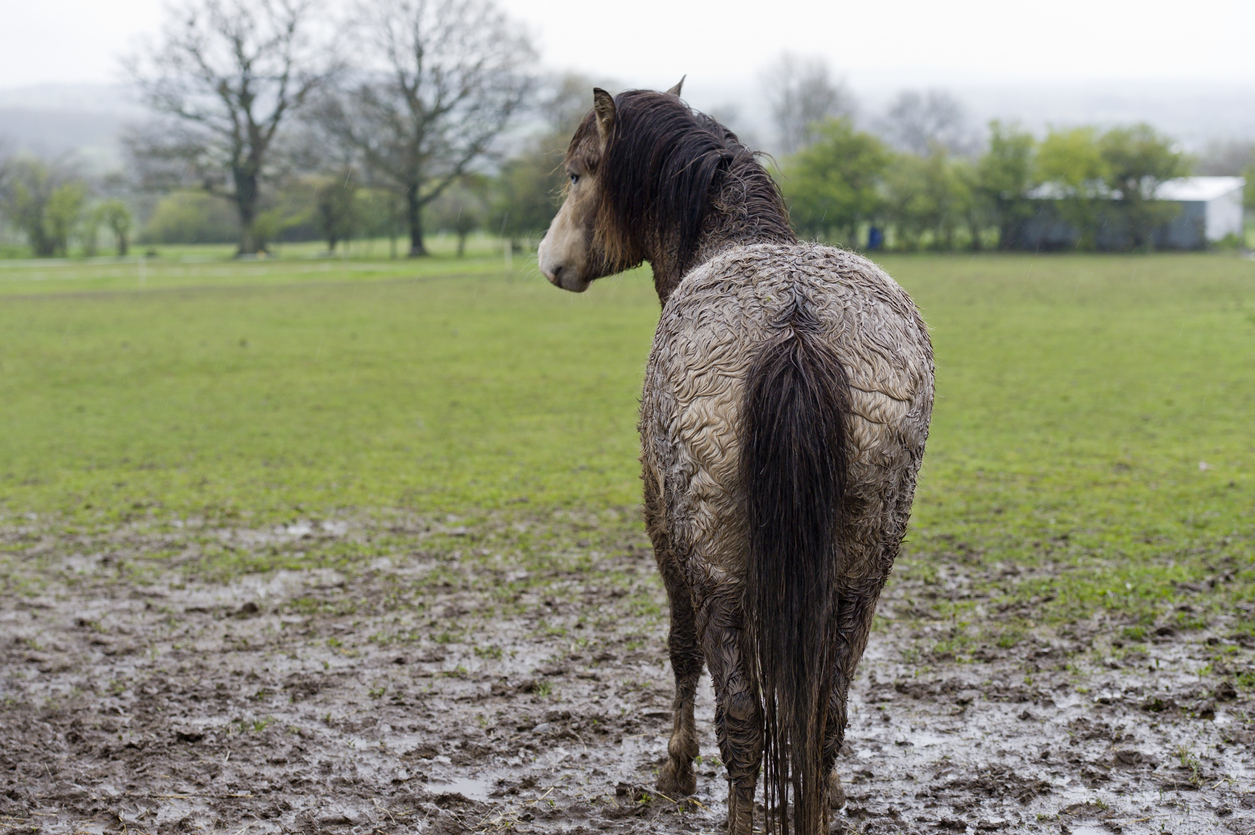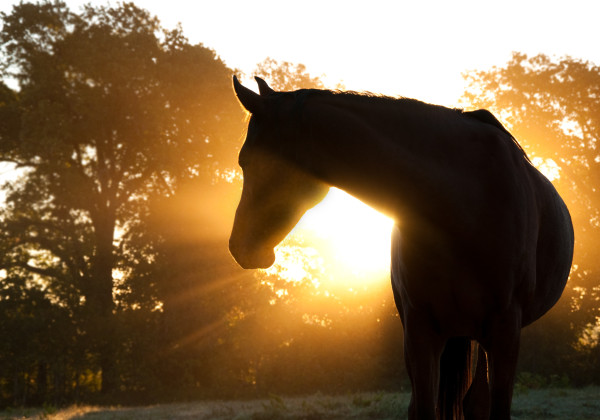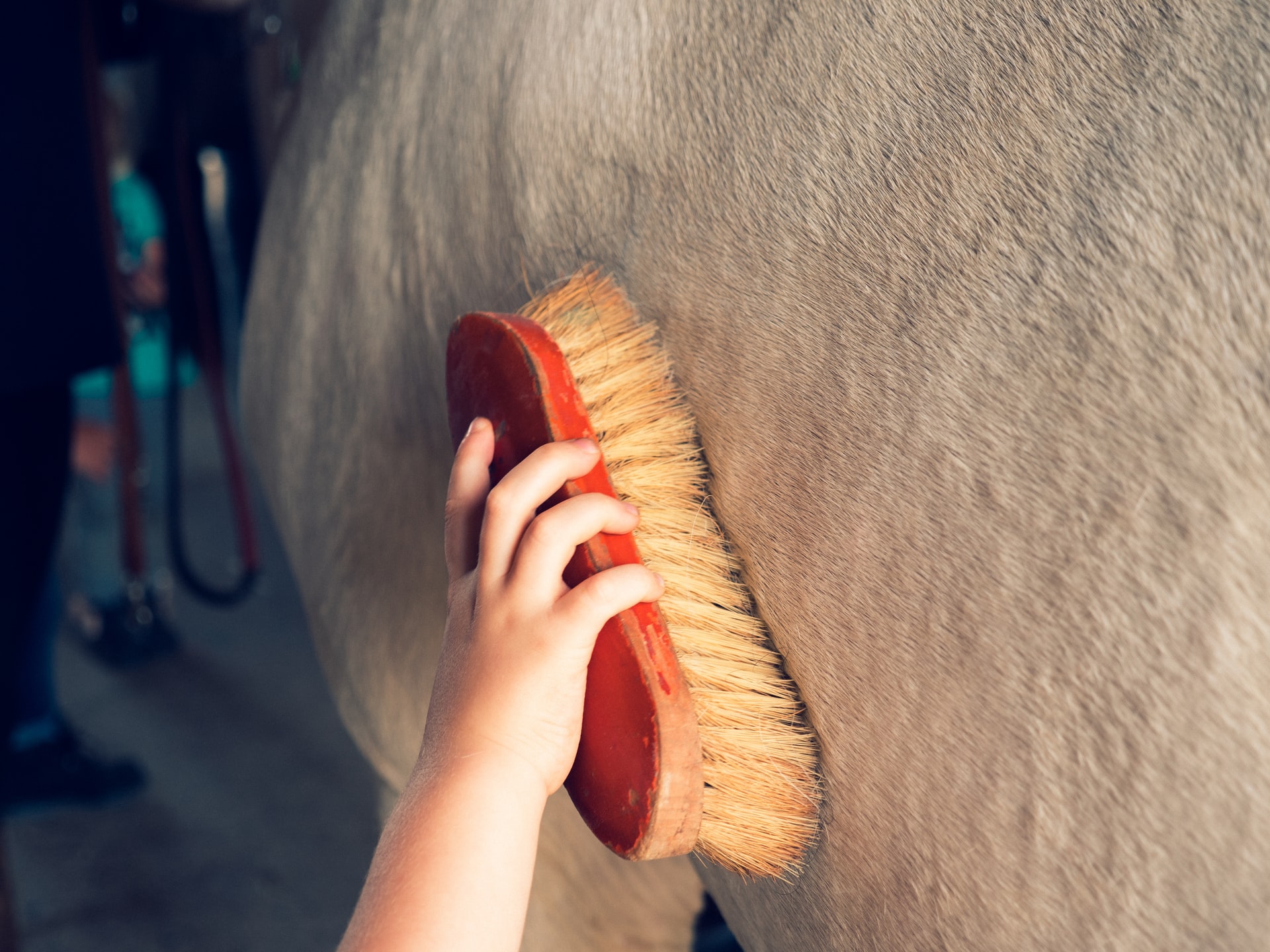Home > Horse Care > 5 Ways to protect your horse’s skin
5 Ways to protect your horse’s skin
- December 23, 2025
- ⎯ Equus
Protecting your horse’s skin need not be an overwhelming concern. Most of the time, a horse’s skin doesn’t require much special attention. Daily grooming and the occasional bath are usually all it takes to keep your horse’s skin in good shape. But you don’t want to take healthy equine skin for granted. After all, a stretch of unrelentingly damp weather, a change in turnout routine or illness can leave your horse susceptible to skin conditions that are not only uncomfortable but may be difficult to resolve.
So it’s far better to be proactive about your horse’s dermatological health. This doesn’t mean buying expensive medicines or any high-tech devices. Rather, you’ll just want to collect a few simple supplies and deploy them with common sense. Here’s a closer look at the measures that are most likely to help keep your horse’s skin supple, sound and trouble free.
Skin Saver #1: Shield your horse’s skin from the sun
Generally, horses are healthiest when they can spend as much time outdoors as possible. But when turnout means high levels of sun exposure, a variety of painful and potentially serious conditions can occur.
• What you’ll prevent: Just like you, your horse can get sunburned. Pink skin under white markings is especially susceptible because it contains less of the protective pigment melanin. A horse’s sunburn will look much like your own—the skin will be inflamed, red and tender to the touch.
Sun exposure combined with ingestion of certain plants or medications can also lead to a painful condition called photosensitivity. Primary photosensitivity occurs when a horse grazes on St. John’s wort, buckwheat or other plants that contain photodynamic chemicals. These chemicals circulate in the bloodstream and are activated when light reaches them through areas of pink skin. The chemicals “burn” the tissues in the skin, causing swelling and blisters. The blisters progress to tight crusts that slough in large sheets. Secondary photosensitization occurs when illness, ingestion of toxic plants or medications compromise the horse’s liver, making it unable to filter photodynamic compounds from the blood. The result is the same painful sequence of events seen in cases of primary photosensitization.
Another skin woe that is often sun-related is squamous cell carcinoma, tumors linked to extended exposure to ultraviolet (UV) light. These lumpy, inflamed growths most often form on pink skin around the eyes or genitalia. They usually do not metastasize, meaning they are unlikely to spread to other organs, but they can become locally invasive. Left untreated, squamous cell carcinomas can become large and ulcerated (raw) and be very difficult to cure.
• What you can do: To prevent the worst of sun exposure, take steps to reduce the likelihood of photosensitivity. This means ridding your pastures of St. Johns wort and other plants that contain photodynamic compounds. If you’re unfamiliar with the weeds on your property, ask for help at your local university agricultural extension office. In addition, whenever medications are prescribed for your horse, ask your veterinarian about possible photodynamic reactions, particularly if your horse has ever experienced photosensitivity before.
More generally, you can protect your horse from the sun by simply making sure there is shade in his turnout area. This can be in the form of a run-in shed or even a thick stand of trees. Not all horses will use the shade, but most will take advantage of the cooler temperatures they’ll find out of direct sunlight.

Also consider applying a sunblock, such as a zinc oxide cream, to areas where your horse has pink skin. These products tend to be thick and messy but provide good protection from the sun and are easily spread over fleshy areas. For spots with thicker hair, try a non-greasy sunscreen specially formulated for horses.
A variety of sun-shielding garments are also available for horses, from UV-blocking fly sheets to masks with flaps that reach down to cover muzzles to leg wraps that protect white legs. Garments provide a physical barrier against damaging rays and are much less messy than ointments, but you’ll need to make sure they stay on throughout the day.
• When to get help: Sun damage needs veterinary attention if it appears to be painful or the skin is thick or edematous or is sloughing. Call your veterinarian if you see growths that may be squamous cell carcinomas; she can not only make a definitive diagnosis, but also help you track the size and growth of the tumors over time. Early recognition of squamous cell carcinoma is essential for the best chance of a cure.
Skin Saver #2: Allow your horse’s skin to dry
Obviously it’s not possible to keep your horse’s skin dry all the time. And it’s also unnecessary: A bit of rain never hurt any horse. But skin that is continually damp or waterlogged is susceptible to infection.
• What you’ll prevent: The most common affliction associated with constant dampness is scratches, a chapping of the skin behind the pasterns. Prolonged exposure to moisture—often via wet grass—softens the skin in that area, allowing infection to develop. The infection is often a combination of bacteria and fungi, which makes this condition difficult to treat. Scratches can range from mildly uncomfortable to extremely painful and can be characterized by anything from cracked, oozing skin to crusts and scabs.
Click here to learn about a quick and easy treatment for scratches.
Rainrot, an infection of the hair shafts by Dermatophilus spp. bacteria, is another nasty condition associated with perpetually wet weather. Rainrot causes telltale bumps along the back and withers, where rain tends to fall and run off the horse. In horses with longer coats, stiff, upright tufts of hair will form with the tender infected pustules beneath. In shorter haired horses you may not notice the upright orientation of the hair, but the lesions will still be apparent.

• What you can do: Scratches can be prevented by making sure your horse has access to dry footing, even during rainy periods. Make sure your paddocks and pastures drain well, especially in the areas where horses tend to congregate. If necessary, put down crusher-run gravel or heavy-duty mats around the water trough, hay feeder and other high-traffic areas. If your horse has a run-in shed, make sure the surrounding ground is graded so water won’t collect inside. If your horse has a stall, keep his bedding as clean and dry as possible.
The same steps will also reduce your horse’s risk for rainrot. Years ago, people thought rainrot was caused by poor grooming, but we now know that even a well-kept horse exposed to excessive moisture can develop the infection—although older and immune-compromised horses are more susceptible. Make sure every horse in your herd has access to a dry shelter. Having a dry place to lie down is equally important because contact between the skin and the wet ground encourages infection.
• When to get help: When you’ve done your best to keep your horse’s skin dry but he still frequently and predictably develops scratches or rainrot, seek veterinary help. Underlying factors may need to be addressed, or you may be dealing with a lookalike condition.
Skin Saver #3: Defend your horse’s skin against bugs
During the warm seasons, insects are more active and can be hard on your horse’s skin. Insect bites are most often just momentarily annoying for a horse, but they can also trigger dramatic and long-lasting reactions.
• What you’ll prevent: Commonly known as “sweet itch,” insect bite hypersensitivity is an allergic reaction to the saliva from certain biting insects. Studies show that horses of some breeds have a genetic predisposition to develop the condition, with Icelandic, Shetland and Friesians being most susceptible, and sweet itch often gets worse as the horse ages. The most common culprits are tiny midges of the Culicoides species, but reactions also can be caused by black flies, horn flies, stable flies and a variety of other insects. Sweet itch causes swelling and itchiness; in fact a horse may rub himself raw seeking relief.
Click here to learn about promising research into a sweet itch vaccine.

• What you can do: Fly spray is a good start to preventing insect sensitivity. Choose a product labeled as a repellent rather than an insecticide, which kills only after the pests have already bitten your horse. Sprays won’t be enough to help a horse afflicted with sweet itch, however. You’ll also need to keep him indoors during the insects’ prime feeding times, which is usually dawn and dusk but may vary with the species involved. Ideally, he’ll have a stall outfitted with window screens and a fan—tiny insects find it hard to fly in a breeze. But, failing that, any shelter you can provide during those crucial hours will be helpful.
Fly sheets can also create a physical barrier between your horse and insects. For example, custom designed outfits, which cover the belly, tail and other sensitive areas, are available for horses with sweet itch. The investment may be worthwhile if it saves your horse from a summer of itchy misery.
• When to get help: Flies and bugs are a fact of life in the summer, but when your horse is in a constant state of irritation or discomfort because of reactions to bites, or if he is rubbing himself raw in an effort to end the itching, it’s time to call your veterinarian for help. Laboratory tests can usually identify the trigger and may help determine the best course of treatment, such as short-term antihistamine or steroid administration.
Skin Saver #4: Be cautious using new products on your horse
Most manufacturers are careful to make sure grooming products are formulated to be suitable for even sensitive-skinned horses, but that doesn’t mean a particular substance won’t irritate an individual horse’s skin. Also, in rare cases, a topical product may cause an allergic reaction when it comes in contact with a horse’s skin.
• What you’ll prevent: A substance that irritates a horse’s skin will often cause inflammation, itching and perhaps scabbing. An allergic reaction, called hypersensitivity, can produce similar signs. In addition to inflammation, itchiness and hair loss, hypersensitivity can lead to hives—large, flat raised wheals on the skin that may or may not be itchy.
• What you can do: When trying a new product, test it on a small area of your horse’s skin, then wait a day to see if anything unusual develops. Keep in mind that it’s not just things that you apply directly to your horse that can cause such a reaction. Washing a saddle pad with a new detergent, for instance, can trigger a reaction when you place it on your horse’s back. Your horse may also come into contact with substances without your knowing it, by rubbing up against treated lumber, for instance. Being aware of the products used on the property where your horse is kept and any recent changes can help you prevent reactions.
• When to get help: An allergic reaction that leads to swelling of the face and nostrils can impede breathing. If your horse has any reaction near his head, call your veterinarian. Likewise, call if your horse’s skin reaction appears to be affecting him systemically, with a fever, signs of colic or any other indications of illness. If the reaction results in self-trauma it would also be advisable to call your veterinarian to try to provide your horse with some relief.
Skin Saver #5: Don’t share tack or grooming tools
Brushes, currycombs and other grooming tools are often shared at a barn, but they are perfect vehicles for spreading skin diseases. Likewise, saddle pads, tack and blankets can carry contagions from horse to horse.
• What you’ll prevent: Ringworm is one of the most highly contagious equine skin diseases. Despite its name, it’s not caused by a worm but is, in fact, a fungal infection. Ringworm (dermatophytosis), spreads in circular patches, creating distinct round bald spots with centers of itchy, crusty, scaly skin. Rainrot, described earlier, is also contagious but to a lesser extent.
• What you can do: Disinfect your horse’s grooming tools regularly, even when there are no ongoing disease outbreaks. A thorough vacuuming will remove dirt, but a short soak in a mild bleach solution (10:1) followed by drying in the sunlight is the key to killing pathogens. Then, don’t share tools. Having a separate set of grooming tools for each of your own horses might be overkill, but resist the urge to loan a brush to a friend or fellow show-goer, especially when you aren’t very familiar with the horse it will be used on.
Take the same approach with tack. It’s ideal for every horse at a barn to have his very own saddle, bridle, pad and blankets. If that’s not possible, limit sharing to horses you know to have healthy skin.

• When to get help: If any skin disease jumps from one horse to another in your barn, call your veterinarian for advice on how to stop it from spreading further. You may be overlooking a mode of infection, or you might need a more aggressive approach to treatment and control. Ringworm is also zoonotic, meaning it can be passed to people, so if you develop red, circular skin lesions you may need to see your physician as well.
Most of the attention devoted to a horse’s skin focuses on enhancing his appearance. But skin care involves more than aesthetics. To be truly healthy, skin requires the same preventive consideration we give the rest of his body. With a few simple measures, however, it’s easy to keep his skin healthy, which, of course, will also keep it looking good.
Don’t miss out! With the free weekly EQUUS newsletter, you’ll get the latest horse health information delivered right to your in basket! If you’re not already receiving the EQUUS newsletter, click here to sign up. It’s *free*!How Medical students learn horse sense





